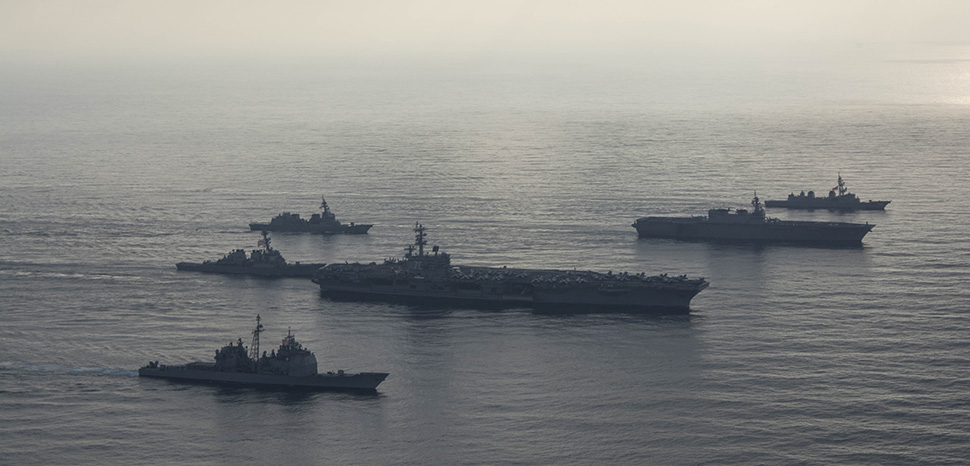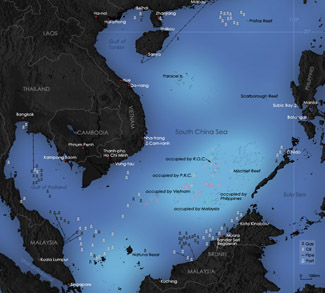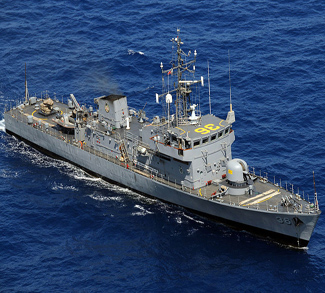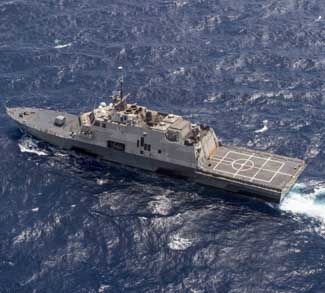On April 7, 2024, the latest Maritime Cooperative Activity (MCA) exercise was launched in the South China Sea, with participants consisting of naval units from Australia, Japan, the Philippines, and the United States. A joint statement released on April 6 by the Philippine Department of National Defense (DND) declared that the MCA was conducted “in a manner with international law as well as domestic laws and rules of respective nations, and with due regard to the safety of navigation and the rights and interests of other states.” The statement was, in turn, signed by the defense secretaries/ministers from the four countries.
This is the fourth MCA exercise conducted in 2024. The first Maritime Cooperative Activity exercise was held in 2023 with the US and Philippine navies, followed by another with the Australian and Philippine navies. During the latest MCA, participating ships included the BRP Gregorio del Pilar and Ramon Alcaraz, the USS Mobile, the JS Akebono, and the HMAS Warramunga.
The Japanese Embassy in the Philippines released a separate statement outlining the scenarios involved in the MCA in greater detail, including anti-submarine warfare training, tactical exercises, link exercises, and photo exercises. During the MCA, the People’s Liberation Army (PLA) Southern Theater Command (STC) announced that it was conducting joint naval and air patrols in the South China Sea on the same day, declaring that “military activities that mess up the situation in the South China Sea and create hotspots are under control.”
These latest naval exercises come after a spate of maritime confrontations between Beijing and Manila. The Philippine Coast Guard (PCG) reported on April 6 that ships from the Chinese Coast Guard (CCG) harassed Filipino vessels in Philippine Exclusive Exclusion Zone (EEZ) waters in the South China Sea. According to a statement posted by PCG spokesperson Commodore Jay Tarriela on X, the CCG ships harassed Filipino fishermen supporting ships from the PCG and the Bureau of Fisheries and Aquatic Resources (BFAR) on a mission in Rozul Reef, which is located 128 nautical miles from Palawan, on April 4. Photos of the encounters were also posted on X alongside Commodore Tarriela’s statement. This comes after a series of conflicts over the second half of 2023 centered around the Second Thomas Shoal, a contested South China Sea feature where the Philippines continues to maintain a small detachment of marines on the Sierra Madre, a light transport ship intentionally run aground in 1999.
Maritime Cooperative Activity exercises are unfolding against the backdrop of new talks intended to deepen defense cooperation between Manila and Tokyo. Philippine ambassador to the US Jose Manuel Romualdez said that discussions are planned in the wake of a summit between Manila, Tokyo, and Washington DC, scheduled to be held on April 11. These talks are expected to broach the subject of establishing a legal path for the deployment of Japanese Self-Defense Forces (JSDF) forces on Philippines territory on a rotational basis under a Japan-Philippines Reciprocal Access Agreement (RAA). If the agreement is signed, it would be the third such agreement where the Philippines established security guidelines with partner nations allowing foreign troops to be stationed on Philippine territory, with the other two involving the United States and Australia. Other issues being explored include the possible presence of the JSDF in the annual Balikatan exercises alongside American and Filipino troops, and joint maritime patrols in the South China Sea. Ambassador Romualdez said that a joint statement will be formally issued after the summit in Washington DC. As of 2024, Japan has participated with the two countries alongside American and Filipino marines through the KAMANDAG exercises via the Amphibious Rapid Deployment Brigade (ARDB).
For Japan, the Maritime Cooperative Activity and upcoming summit come amid a general reorientation of its posture in East Asia, amid an evolving security environment due to threats stemming from a more aggressive Russian foreign policy posture, Chinese aircraft intrusions, and North Korean missile tests near Japanese airspace and waters. Joining the MCA is viewed by Japan as a way to bolster its reputation as a reliable security partner in Indo-Pacific countries and beyond.
As for the Philippines, recent cooperation signals a desire to set up alliances to counter Chinese incursions into Philippine waters. Participating in the MCA with the United States and later, with Australia and Japan, allows Manila to buttress rule of law in Southeast Asian waters, and especially in the South China Sea. Chinese incursions are affecting Manila’s national security, and as such, partnering with like-minded countries is viewed as a way to counter China’s encroachments.
A successful round of MCA exercises reinforces the idea that all parties have the right to safely navigate international waters, without being impeded by one state. In addition to ensuring that China respects the rule of law, the use of maritime exercises can deepen military cooperation with all the allies involved. The trilateral summit also allows the United States to become more involved in the region as a partner with direct interests in the Indo-Pacific. Finally, the MCA can serve as another forum for any and all countries in the Indo-Pacific that wish to participate, as shown by the participation of Australia and Japan when the forum was first launched in 2023.
The views expressed in this article belong to the authors alone and do not necessarily reflect those of Geopoliticalmonitor.com.




